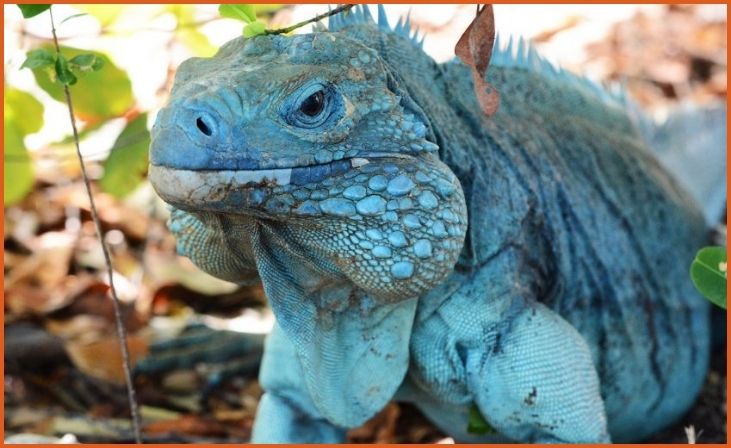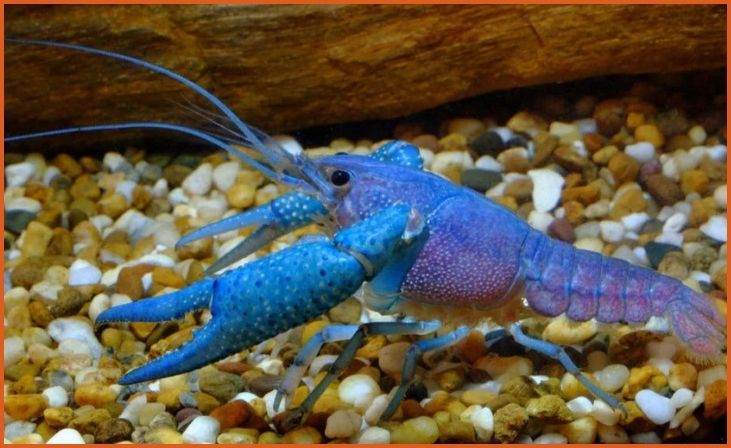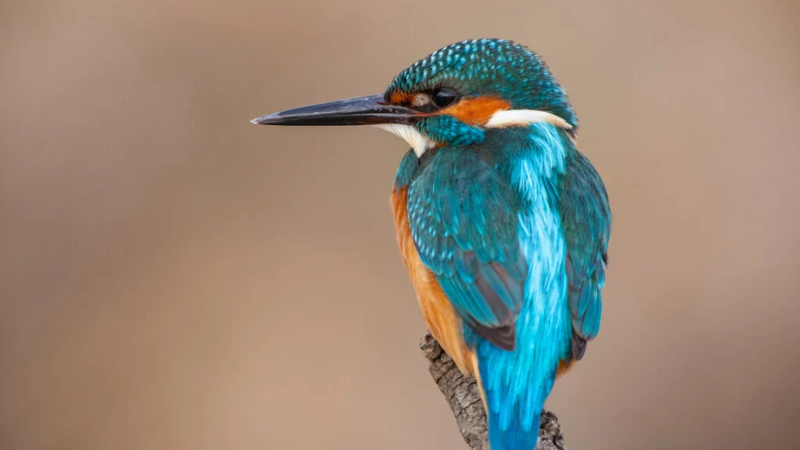Blue is a rare and striking color in the animal kingdom, and some species stand out with their captivating hues. From the vibrant blue of the Blue Iguana to the stunning azure of the Indigo Bunting, these blue animals are not only beautiful but also intriguing. Here’s a closer look at nine of the most stunningly blue animals that showcase the remarkable diversity of nature.
Blue Iguana

The Grand Cayman Island Blue Iguana is one of the longest-lived lizards and is renowned for its stunning blue coloration. Males display a vivid blue hue, which is part of their elaborate mating ritual to attract females. This brilliant blue is not just for show; it plays a crucial role in their reproductive behavior. These striking lizards are not only a visual marvel but also a symbol of conservation efforts. To see one of these magnificent creatures up close, a visit to the Queen Elizabeth II Botanic Park in the Cayman Islands is highly recommended, where you can observe their vibrant coloration and learn about ongoing conservation initiatives.
Indigo Bunting
The Indigo Bunting is a small, vibrant bird native to the eastern and southern regions of North America. Its male members are particularly remarkable during the breeding season, flaunting their brilliant azure-blue feathers. The bird’s striking blue plumage is a result of light refraction rather than pigment, which creates an iridescent effect. This unique coloration makes the Indigo Bunting a captivating subject for birdwatchers and naturalists. The bird’s dazzling appearance is matched by its beautiful songs, adding to its appeal as a cherished species in its native habitats.
Blue Coral Snake
The Blue Coral Snake, distinguished by its vivid red head and striking blue stripes, is both beautiful and dangerous. Found in Southeast Asia, this snake is known for its potent venom, making it one of the most lethal snakes in the world. Its vibrant coloration serves as a warning to potential predators of its venomous nature. The striking blue and red hues create a visually stunning yet cautionary display, emphasizing the snake’s role in its ecosystem. Its legendary reputation for danger only adds to the fascination surrounding this uniquely colored reptile.
Blue Dacnis
The Blue Dacnis, also known as the Turquoise Honeycreeper, is a vibrant bird found in the forests and parks of South America. With its dazzling blue body contrasted by a black neck, back, and eyes, this bird is a visual delight. The additional black wings and tail enhance its colorful appearance, creating a striking contrast that catches the eye. The Blue Dacnis is a symbol of the rich avian diversity in its native habitats, where its vibrant plumage adds a splash of color to the lush green surroundings. Its presence in the ecosystem highlights the importance of preserving these beautiful and diverse bird species.
Electric Blue Gecko

The Electric Blue Gecko, native to Tanzania, is a testament to nature’s creativity. These small geckos are adorned with an electric blue hue that makes them particularly eye-catching. Their vibrant color, combined with their petite size and unique patterns, makes them a memorable and striking example of the natural world’s artistry. The Electric Blue Gecko’s coloration serves both as a defense mechanism and a visual marvel, attracting attention from both predators and admirers. Observing these geckos in their natural habitat offers a glimpse into the dazzling diversity of life in Tanzania.
Spix’s Macaw
Spix’s Macaw, also known as the Little Blue Macaw, is a stunning bird from northeastern Brazil. Its vivid turquoise-to-bluish-grey feathers are a sight to behold, and this species has become an icon of conservation efforts due to its near extinction. Despite the challenges it has faced, Spix’s Macaw is slowly being reintroduced to its original habitat. The bird’s vibrant coloration and the ongoing conservation work to protect and restore its population are crucial for ensuring its survival. Observing this magnificent bird in the wild or in conservation programs is a testament to the success of dedicated wildlife protection efforts.
Blue Jay
The Blue Jay is a beautiful North American bird characterized by its blue, white, and black plumage. Beyond its striking appearance, the Blue Jay is known for its intelligence and complex social behaviors. Its distinctive jay-jay cry adds to its charm, creating a lively and familiar presence in many North American backyards. The Blue Jay’s vibrant colors and its role in the ecosystem make it a favorite among bird enthusiasts and a symbol of the diverse avian life in North America. Its interactions with other birds and its ability to adapt to various environments highlight its importance in the natural world.
Blue Surgeonfish
The Blue Surgeonfish, known for its sleek form and brilliant blue coloration, inhabits the Indo-Pacific Ocean. This fish, which inspired the character Dory in “Finding Nemo,” is not only beautiful but also possesses a protective spine on each side of its tail. Its vibrant blue color and streamlined body make it well-suited for navigating the ocean currents. The Blue Surgeonfish’s combination of elegance and functionality in its habitat showcases the remarkable adaptations of marine life. Its presence in the ocean is a testament to the rich biodiversity of the Indo-Pacific region.
Blue Crayfish

The Blue Crayfish is another remarkable example of nature’s use of the color blue. Known for its striking blue exoskeleton, this crayfish stands out in its aquatic environment. Its vibrant coloration provides both beauty and a form of camouflage among the underwater flora. The Blue Crayfish’s unique appearance and its role in the ecosystem highlight the diversity of freshwater species. Observing these crayfish in their natural habitat offers a glimpse into the fascinating world of aquatic life and the variety of colors found in nature.



